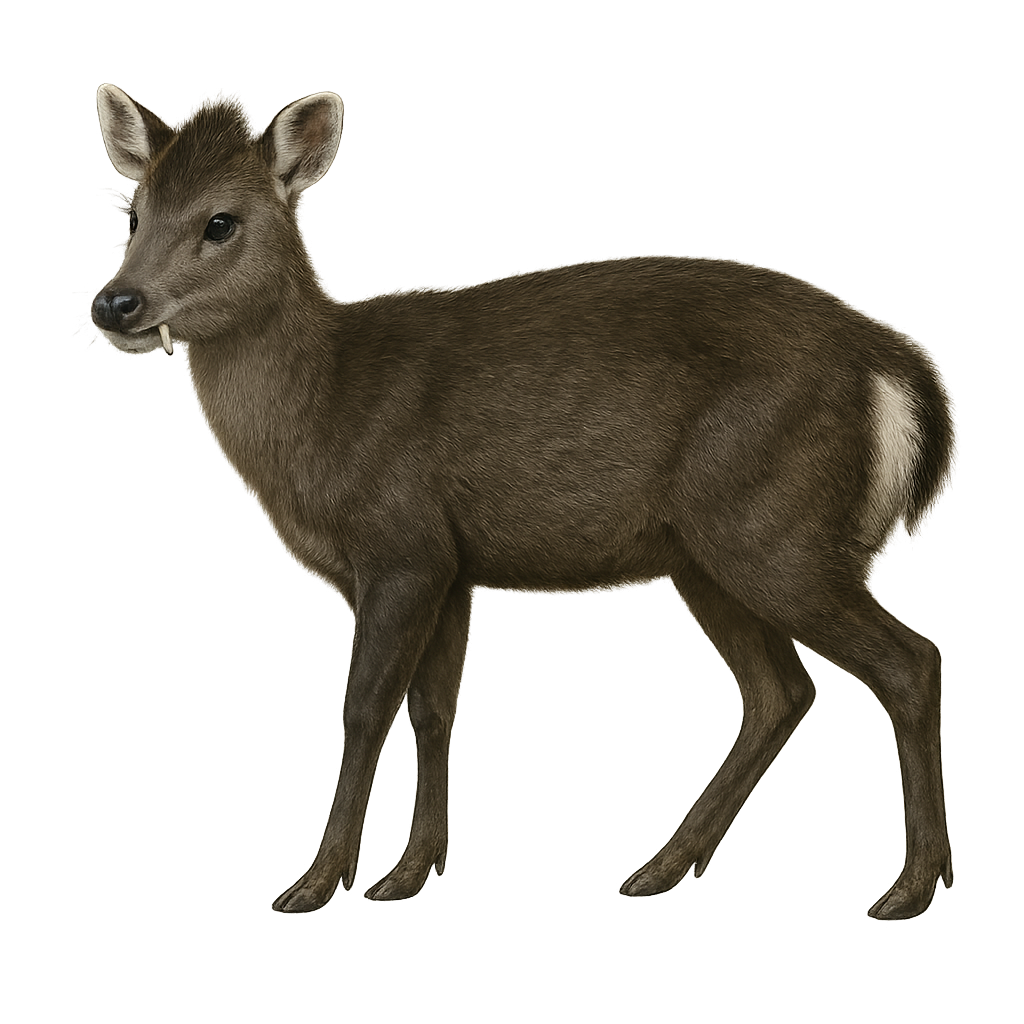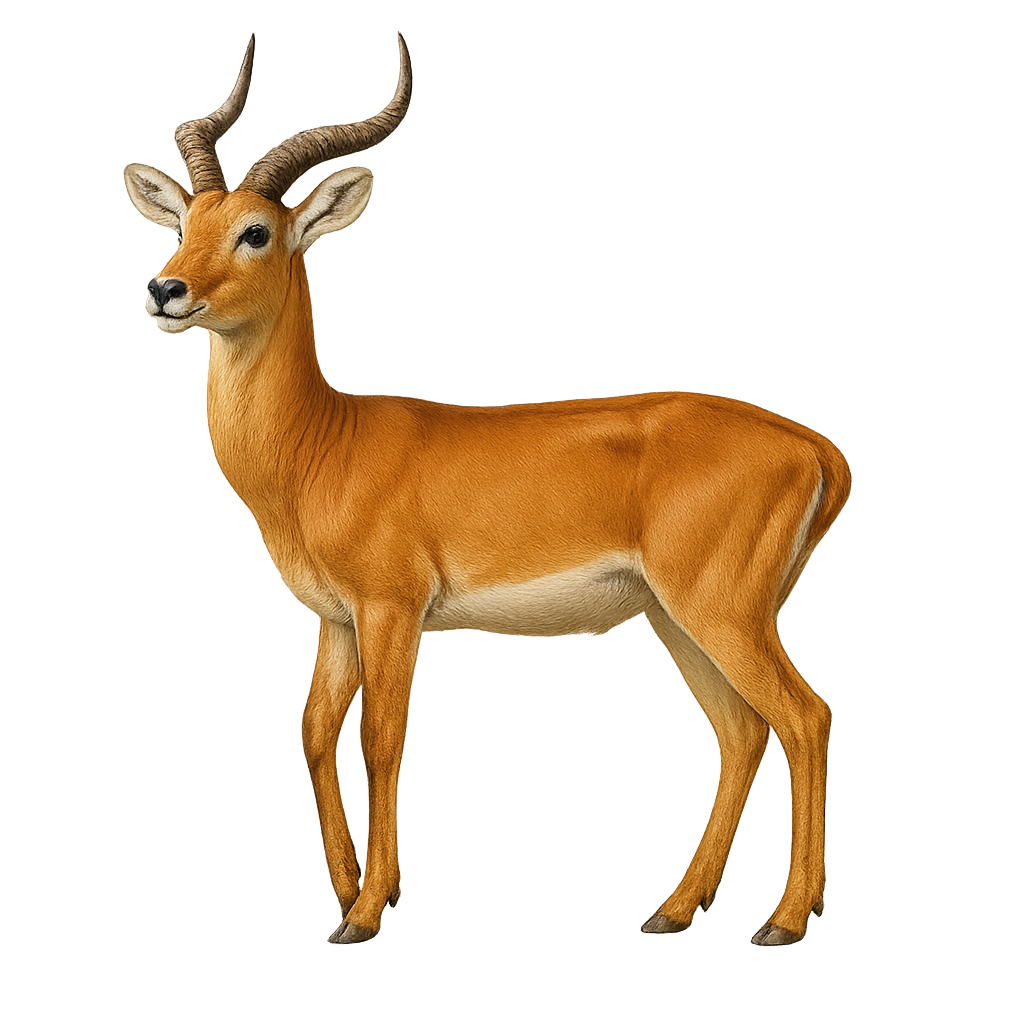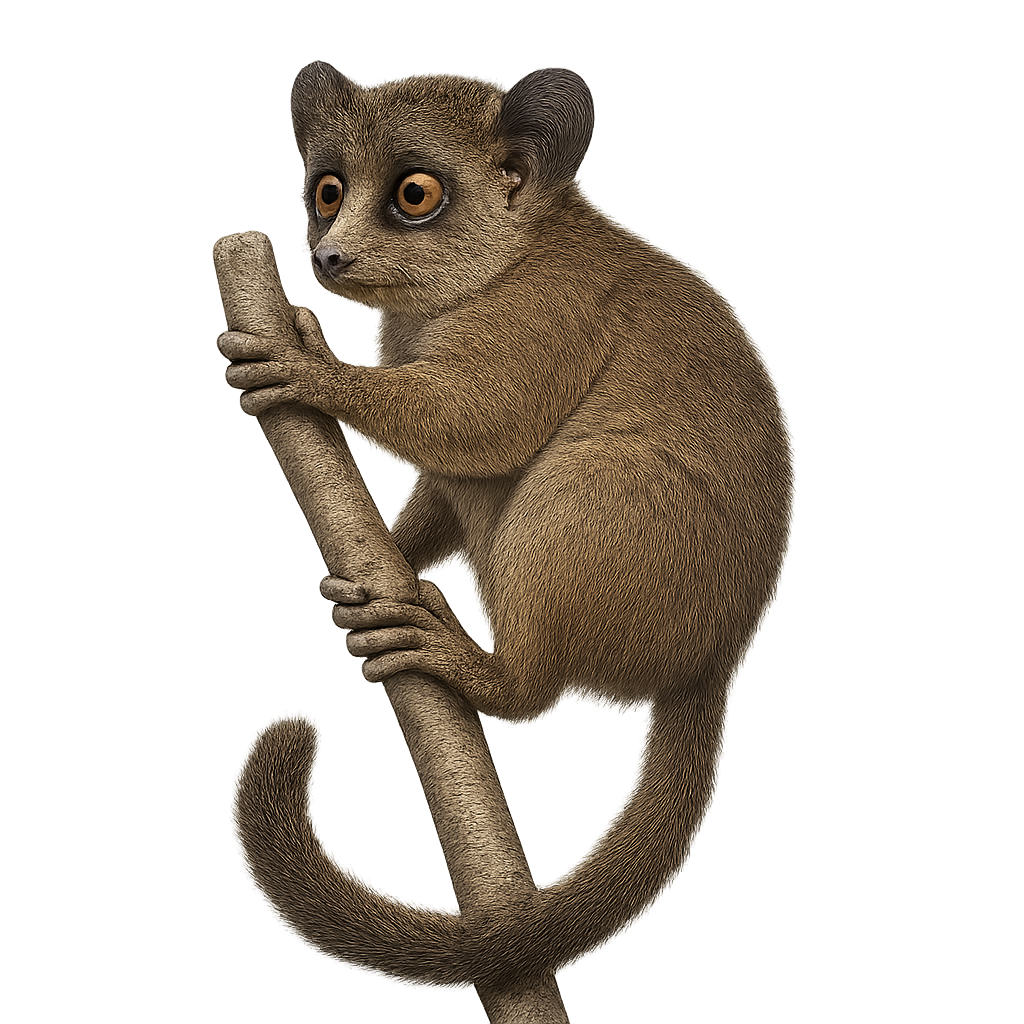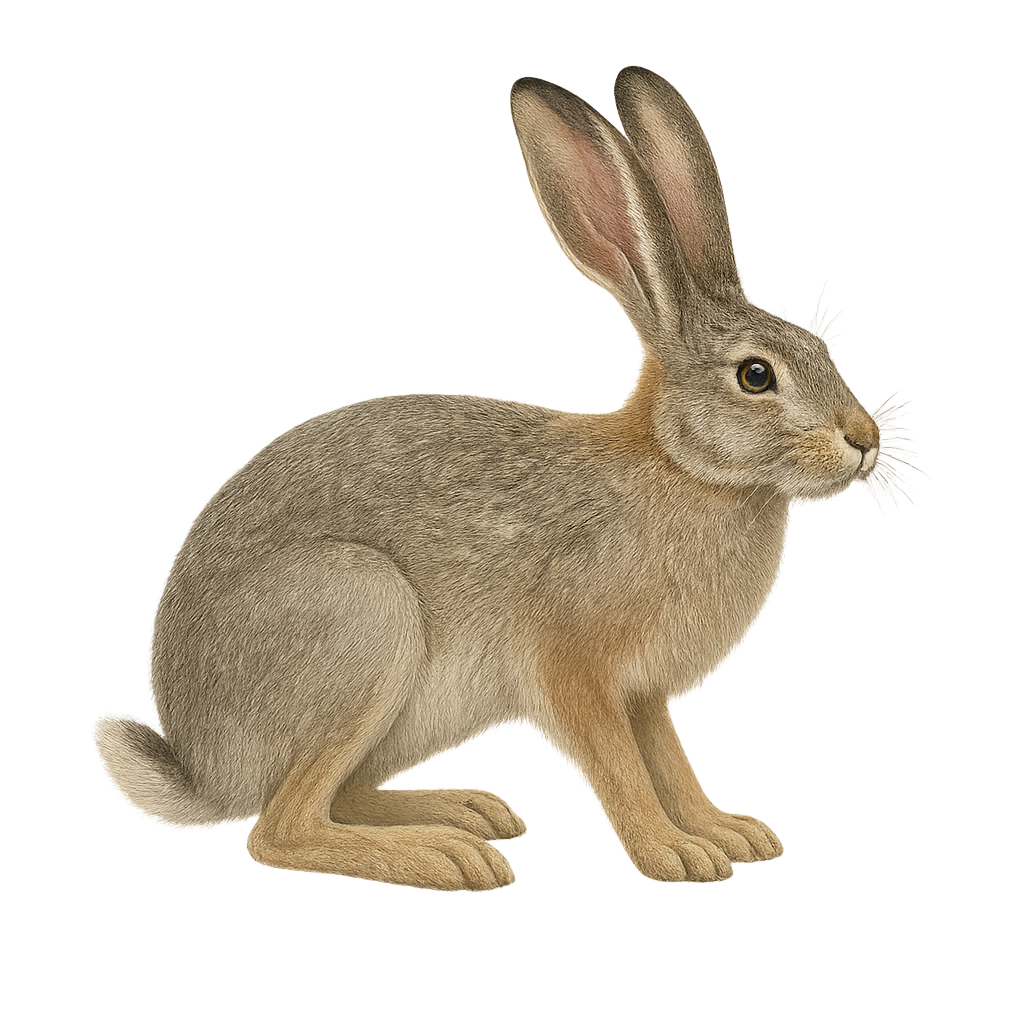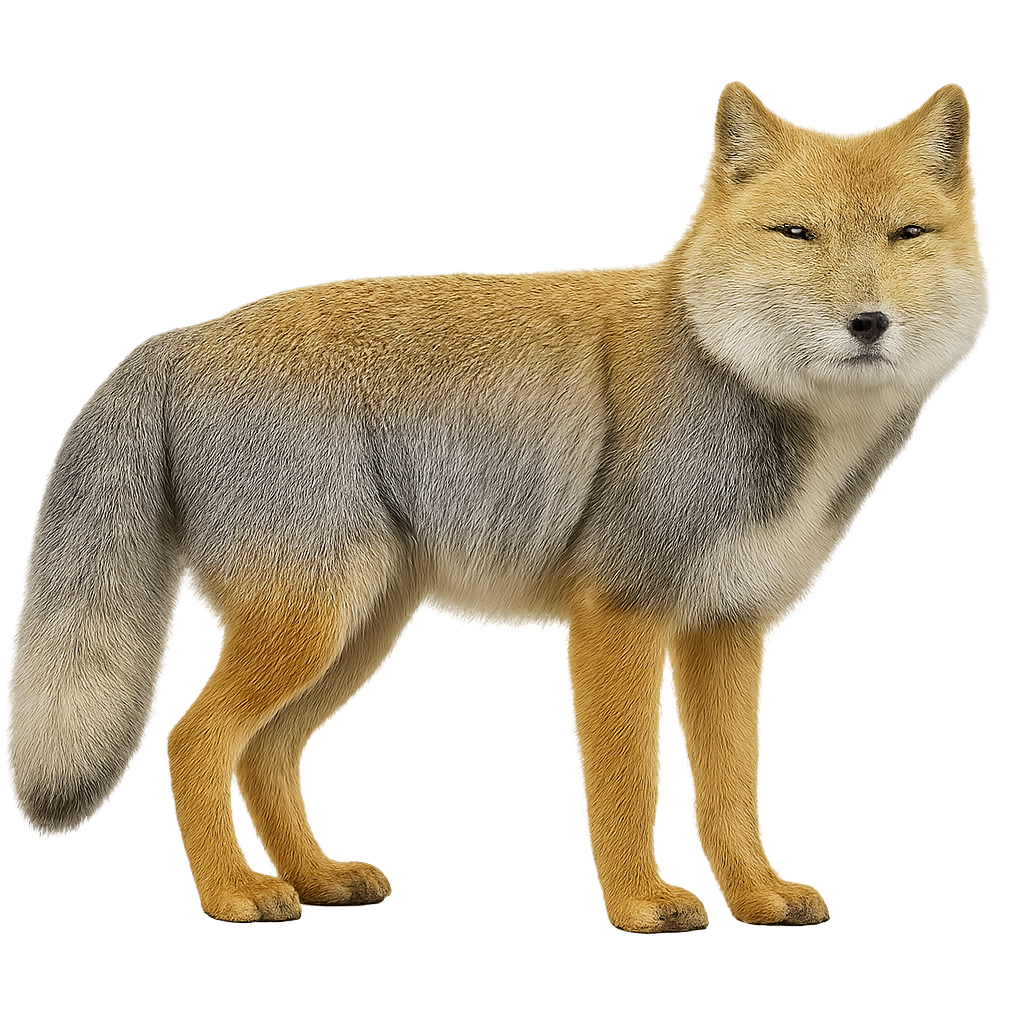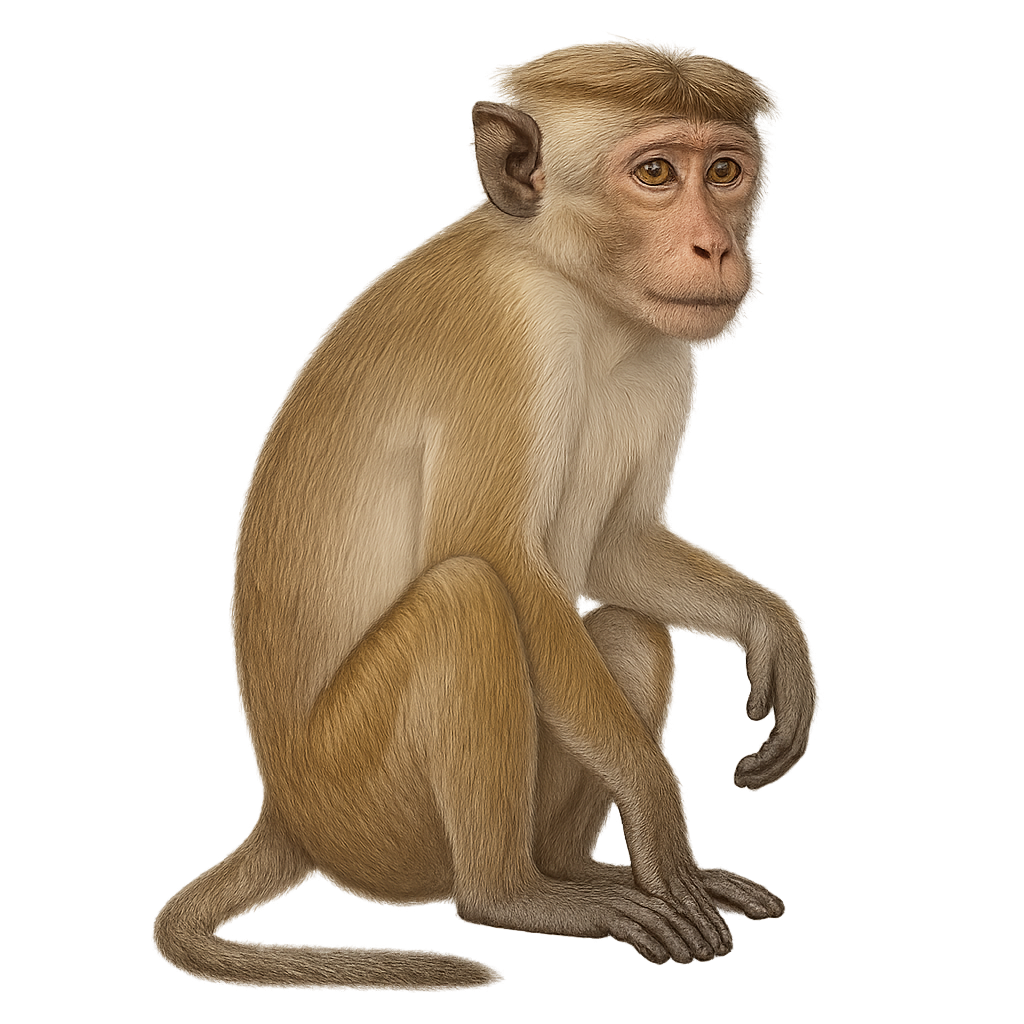The tufted deer, Elaphodus cephalophus, is a small deer species native to the mountainous forests of Asia, mainly in China and Myanmar. It is characterized by its modest size, standing about 50 to 70 cm at the shoulder, and its dark brown coat. Males have small antlers and prominent canines, giving them a distinctive appearance. This deer is primarily solitary, though it may occasionally be seen in small family groups. It is very discreet and prefers dense, wooded areas where it can hide from predators. The tufted deer is an herbivore, feeding on leaves, fruits, and young shoots.
The Thomas's kob is a subspecies of the kob antelope, primarily inhabiting the wet savannas and grasslands of West Africa. It is recognizable by its golden-brown coat, lyre-shaped horns, and medium size, reaching about 90 cm at the shoulder. Males are generally larger and more robust than females. They live in complex social groups, often consisting of harems led by a dominant male. The Thomas's kob is a herbivore, feeding mainly on grasses and aquatic plants. It is well adapted to its environment, capable of moving quickly to escape predators. Its population is stable, but it is threatened by hunting and habitat loss.
The Common Damalisque is a medium-sized antelope, recognizable by its reddish-brown or gray-brown coat, with distinctive white markings on the legs and belly. It stands about 1.10 to 1.30 meters tall at the withers and weighs between 45 and 70 kg. This mammal primarily inhabits the savannas and open grasslands of East Africa, notably in Kenya, Tanzania, and Uganda. It mainly feeds on grasses and herbaceous plants but can also consume leaves and fruits when grass resources are limited. The Common Damalisque is known for its social behaviors, typically living in groups of females and young, while adult males are often solitary or form small groups. During the breeding season, males fight to defend their territory and access females. While it is currently listed as of least concern, the Common Damalisque faces threats such as habitat loss due to agriculture and urban expansion, as well as hunting for its meat and skin.
The Tasmanian Devil is a medium-sized carnivorous marsupial, easily recognized by its black fur and white patches on its chest and hips. It measures about 50 cm in length, with a tail of 25 cm, and weighs between 5 and 10 kg. This nocturnal predator is found exclusively on the island of Tasmania, where it primarily feeds on small mammals, birds, insects, and carcasses of dead animals. The Tasmanian Devil is known for its aggressive feeding behavior, often making growling and screaming noises. It is also a solitary animal, only coming together during breeding or when it finds a large carcass. While this species plays an important scavenging role in its ecosystem, it is now threatened by a devastating infectious disease, Devil Facial Tumour Disease (DFTD), which has significantly reduced its population. Habitat loss and vehicle collisions also pose threats to its survival.
The Thomas's Dwarf Galago, or Galagoides thomasi, is a small nocturnal primate native to the tropical forests of Central Africa. This galago is characterized by its small size, large eyes adapted for night vision, and long hind legs that allow it to leap agilely between branches. Its fur is typically gray-brown with lighter shades on the belly. It primarily feeds on insects but also consumes fruits and sap. Galagos are known for their high-pitched calls and complex social behaviors, although they are often solitary. They play a crucial role in the ecosystem as insect predators and seed dispersers.
The Thomson's Gazelle is a small, elegant gazelle known for its speed and grace. It stands about 60 cm at the withers, with a body length of 90 cm, and weighs between 20 and 30 kg. Its coat is mainly beige, with distinct white markings on its belly and a black stripe running along each side of its body. The adult male has curved lyre-shaped horns, while females generally lack them. The Thomson's Gazelle primarily inhabits the savannas and grasslands of East Africa, particularly in Tanzania and Kenya. It is herbivorous, feeding mainly on grasses, young shoots, and leaves. Very fast, the Thomson's Gazelle can reach speeds of 80 to 90 km/h, allowing it to escape many predators. Although it is currently relatively common, the Thomson's Gazelle faces threats related to habitat loss and human activities, including hunting and competition with livestock.
The Kiang is a large wild equid, closely related to the horse, primarily found in the high plateaus and mountains of the Himalayas and Tibet. It stands about 1.3 to 1.5 meters at the shoulder and weighs between 300 and 400 kg. Its coat is typically brownish-red or gray-brown with lighter shades on the belly and around the legs, and it has a short and sparse mane. The Kiang has a broad head and a bushy tail, similar to that of a horse. It primarily inhabits arid regions and high-altitude grasslands, feeding on grasses and woody plants. Highly social, the Kiang lives in large groups that move together in search of food. Unlike other wild equids, it is more tolerant of cold conditions and can survive at extremely high altitudes, up to 5,000 meters. While the species is relatively abundant in its range, it can be threatened by habitat loss due to climate change and human pressure, particularly from grazing and hunting.
The Tolai hare, Lepus tolai, is a medium-sized mammal known for its long ears and strong hind legs. It has a gray-brown coat that helps it blend into its natural habitat, which mainly consists of steppes, semi-deserts, and open grasslands. This hare is well adapted to arid climates and can be found in regions ranging from Central Asia to Mongolia. It is primarily nocturnal, allowing it to avoid the high daytime temperatures. Although generally solitary, it can be seen in small groups during the breeding season. Its ability to run quickly is its main defense against predators.
The Tapanuli orangutan is a recently discovered primate species, considered one of the rarest and most endangered in the world. It measures about 1.2 meters in height and weighs between 30 and 60 kg. This ape has a shiny reddish coat, with long arms adapted to its life in the trees. Native to the mountains of the Tapanuli region in northern Sumatra, Indonesia, this orangutan primarily inhabits montane tropical forests. It feeds mainly on fruits, leaves, and bark. The Tapanuli orangutan is a solitary and secretive animal and is considered critically endangered due to deforestation, mining, human conflict, and forest fires.
The tree pangolin, or Manis tricuspis, is a medium-sized, nocturnal insectivorous mammal found in the tropical forests of Central and West Africa. It is easily recognizable by its protective scales made of keratin, the same substance as human nails. This pangolin is an agile climber, using its prehensile tail to navigate trees in search of ants and termites, its primary food source. Unfortunately, it is threatened by poaching for its meat and scales, which are highly valued in traditional medicine. Conservation efforts are crucial to maintaining the ecological balance of its natural habitat.
The Tibetan Fox is a small carnivore endemic to the mountainous regions of Tibet, Nepal, and northern India. It measures about 45 to 60 cm in length, with a tail of 30 to 40 cm, and weighs between 2 and 3 kg. Its fur is typically light gray to brown, with darker shades on the back and lighter underparts. It has large pointed ears and a long bushy tail. The Tibetan Fox is an opportunist, feeding on small mammals, birds, fruits, and berries. It primarily lives in dry and mountainous regions, where it digs burrows to protect itself from the cold. Although its population remains relatively stable, the Tibetan Fox is vulnerable to habitat loss and hunting.
The Sus scrofa moupinensis, commonly known as the Tibetan wild boar, is a subspecies of wild boar found primarily in the mountainous regions of Central Asia. It is distinguished by its robustness and ability to adapt to various environments, ranging from dense forests to alpine meadows. Its coat is generally thicker and darker than that of other subspecies, allowing it to better withstand cold temperatures. Males have prominent tusks, which they use for defense and for digging in the ground in search of food. As an omnivore, its diet is varied and includes roots, tubers, fruits, and small animals.
The Tibetan macaque, or Macaca thibetana, is a robust and imposing primate native to the mountainous forests of China. It is distinguished by its thick fur, ranging from golden brown to gray, and its bare, pinkish face. Males are significantly larger than females, sometimes reaching 13 kg. These macaques live in complex social groups led by a dominant male. They are omnivorous, feeding on fruits, leaves, insects, and occasionally small animals. Their habitat is generally between 800 and 2500 meters in altitude, where they adapt to climatic variations. Although their population is stable, deforestation and hunting pose potential threats.
The Macaca sinica, commonly known as the toque macaque, is a primate species endemic to Sri Lanka. Recognizable by its tuft of hair on the top of its head, this monkey has a golden-brown coat with a lighter belly. It primarily inhabits tropical forests but also adapts to urban and agricultural areas. Highly social, it lives in hierarchical groups where females dominate. Its diet is omnivorous, consisting of fruits, leaves, insects, and occasionally small vertebrates. Unfortunately, deforestation and human expansion threaten its natural habitat, classifying it as vulnerable according to the IUCN.
The Takin is a large herbivore found primarily in the mountainous regions of the Himalayas and China. It typically stands between 1.2 and 1.5 meters at the shoulder, with a body length of 1.5 to 2 meters, and weighs between 250 and 350 kg. Its fur is dense and ranges from golden to light brown, with longer hair around the throat and shoulders, giving it a robust appearance. The Takin is an excellent climber and primarily feeds on woody vegetation, leaves, young shoots, and fruits. It lives in social groups and is mainly active at dawn and dusk. While its population remains relatively stable in certain areas, this species is threatened by deforestation and human activities, including hunting and encroachment on its natural habitat.
The Tarsier des Philippines is a small nocturnal primate found primarily in the tropical forests of Southeast Asia, notably in the Philippines, Indonesia, and Borneo. It typically measures about 10 to 15 cm in length, with a tail of 20 to 25 cm, and weighs between 100 and 150 g. The Tarsier des Philippines is known for its remarkably large eyes, which account for about one-third of its head size, allowing it to see in low-light conditions. It also has long legs and large hands, which enable it to move agilely through the trees, where it primarily hunts insects, spiders, and occasionally small vertebrates. While its population remains relatively stable in some areas, the Tarsier des Philippines is threatened by deforestation and habitat loss.
The tayra is a carnivorous mammal native to the forests of Central and South America. It resembles a large marten, with dark fur and a long bushy tail. It is known for its great agility and ability to climb trees, where it hunts small mammals, birds, and fruits. It is a territorial and solitary animal, preferring forested habitats. Although its population is stable, it faces threats from deforestation and hunting.
The Tiger is a large cat primarily found in the forests, savannas, and grasslands of Asia, notably in India, China, Indonesia, and Russia. It typically measures between 2.5 and 3.5 meters in length, including the tail, and can weigh between 100 and 300 kg, depending on the subspecies. The Tiger is easily recognizable by its striped coat, which varies from yellow-orange to white, with distinctive black bands. It is a solitary and territorial predator, primarily feeding on large herbivores such as deer, wild boars, and buffalo. While it is at the top of the food chain, the Tiger is threatened by habitat loss, poaching for its fur and bones, and conflicts with human populations. Some subspecies, such as the Sumatran Tiger and the Siberian Tiger, are particularly endangered.
The thylacine, or Tasmanian tiger, was a large nocturnal carnivorous marsupial up to 1.8 m long (including tail) and weighing 15–30 kg, with pale yellow fur marked by dark dorsal stripes. Endemic to Tasmania, it inhabited rainforests, scrublands, and grasslands, preying mainly on wallabies and birds at dusk and night. Solitary and shy, it sheltered in natural dens or rock crevices.


